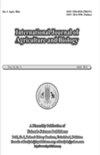木犀草素在硫代乙酰胺大鼠睾丸毒性模型中的可能保护作用
Q2 Agricultural and Biological Sciences
引用次数: 0
摘要
木犀草素是一种黄酮,是一种天然的抗氧化剂。木犀草素的治疗作用受其抗氧化、抗炎、抗癌、神经保护和抗肿瘤特性的影响。本研究旨在建立硫代乙酰胺(TAA)致睾丸毒性动物模型。此外,补充高剂量木犀草素(lutein, LUT),观察LUT对TAA诱导的精子毒性、氧化应激的危害和睾丸组织病理学改变的作用。30只成年大鼠平均分为三组,如下:G1:阴性对照组,G2:给予TAA 200 mg/kg体重,G3:在TAA治疗的同时给予LUT 50 mg/kg体重,疗程4周。在实验中,对组织、免疫组织化学、生化和形态计量学指标进行了评估。TAA显示睾丸组织的正常结构丧失,间质间隙宽,生发上皮的层状排列丧失,细胞间间隔大。此外,vimentin染色的支持细胞数量的减少和vimentin阳性细胞的平均值的显著减少增加了睾丸组织的氧化应激。LUT保护睾丸免受这些改变。通过减少氧化应激、组织学和免疫组织化学改变以及恢复正常睾丸组织结构和功能,LUT成功降低了TAA在白化病大鼠中的睾丸毒性,这表明LUT在人类中可能具有类似的作用。©2022朋友科学出版社本文章由计算机程序翻译,如有差异,请以英文原文为准。
The Possible Protective Effect of Luteolin in a Thioacetamide Rat Model of Testicular Toxicity
Luteolin is a flavone that serves as a natural antioxidant. The therapeutic impacts of luteolin is influenced by its antioxidant, anti-inflammatory, anticancer, neuroprotective and antineoplastic properties. This study aimed to establish an animal model of testicular toxicity caused by Thioacetamide (TAA). In addition, high doses of Luteolin (LUT) were supplemented to observe the role of LUT in attenuating spermato-toxicity, the hazard of oxidative stress, and testicular histopathological alterations induced by TAA. Thirty adult rats were equally divided into three groups as follow; G1: negative control group, G2: was given TAA 200 mg/kg body weight, G3: was received LUT at a dose of (50 mg/kg body weight) for four weeks concurrently with TAA. During this experiment histological, immunohistochemical, biochemical and morphometric measures were evaluated. TAA revealed loss of normal architecture of testicular tissue, wide interstitial spaces, and a loss of stratal arrangement of germinal epithelium with intercellular spacing. Also, a reduction in the number of +ve vimentin staining Sertoli cells with a marked reduction in the mean of vimentin-positive cells increased oxidative stress in testicular tissue. LUT protected testis against these alterations. By reducing oxidative stress, histological and immunohistochemical alterations and restoring the normal testicular tissue architecture and function, LUT successfully lowers TAA testicular toxicity in albino rats, recommending that it may have similar effects in humans. © 2022 Friends Science Publishers
求助全文
通过发布文献求助,成功后即可免费获取论文全文。
去求助
来源期刊

International Journal of Agriculture and Biology
AGRICULTURE, MULTIDISCIPLINARY-
CiteScore
1.70
自引率
0.00%
发文量
40
审稿时长
5 months
期刊介绍:
Information not localized
 求助内容:
求助内容: 应助结果提醒方式:
应助结果提醒方式:


